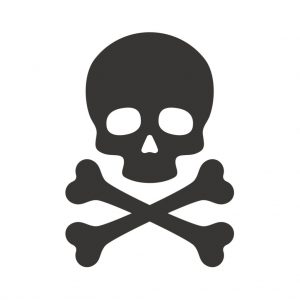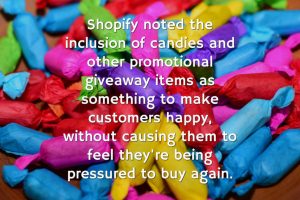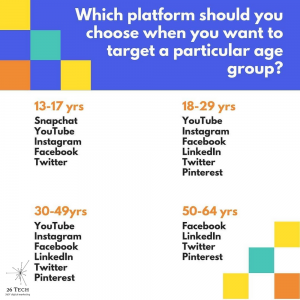HR Data is becoming incredibly sophisticated. I met with a business the other day that has four dedicated PhDs in their HR department to handle “big data” analysis.
Most HR departments aren’t that advanced yet, but the ones that are taking analytics seriously will have a huge advantage over their competitors. Gut feelings simply won’t work anymore.
Understanding what qualities and characteristics make a top performer will help your team hire and retain top talent.
The future of HR metrics is predictive, but that’s not fully ready yet. The idea is cool but the technology isn’t perfect yet. As HR teams start to get better with their people analytics, everyone in the company will share the responsibility of measuring and optimizing these numbers.
As more businesses use analytics to make decisions, HR teams are feeling the pressure to leverage big data to improve things like time to hire and employee retention.
Questions HR managers can answer by using data are:
- How can we retain and engage top talent?
- How can we change our compensation process?
- How can we create more collaboration?
- How can we increase employee diversity?
According to research from Deloitte, companies that are “datafying” HR have two to three times better results in quality of hire, leadership development and employee turnover.
One important thing to note, data isn’t perfect. As a simple example: imagine if a candidate has a year gap on their CV. Any algorithm or tool looking for top performers would most likely ignore this candidate, but what if they needed to take a year off to take care of a sick family member or something more severe?
It’s important to keep that in mind when using data to help you make decisions. It shouldn’t be used blindly, use data to back up or strengthen your hypotheses, but don’t let data alone make all the decisions.
Predictive HR Metrics
Employee attrition is a major problem for many companies. Great talent is scarce, hard to keep and in high demand. The link between employee happiness and customer satisfaction is clear, so companies need to use data to keep employees happy.
Predictive analytics can help improve employee engagement and plan employee retention campaigns.
Sophisticated algorithms that use historical data to determine the likelihood that someone will leave is how this works.
One of the best examples of a company using analytics to get better at what they do is Xerox.
They were able to reduce employee attrition by 20% by discovering what characteristics make up a good call center employee.
Using a product called Evolv, they collected large amounts of data from their front-line employees on their characteristics and their job performance.
Evolv found that employees without any call center experience were just as successful as those that had experience, allowing Xerox to broaden its candidate pool.
Employees with creative personalities stayed longer than those with inquisitive personalities, letting Xerox improve the quality of its hires. It costs Xerox $ 5,000 to train a call center employee, so this is serious money saved.
HR Metrics in Recruiting
The amount of data that recruiters can use now makes their job easier (or harder, depending on how you argue it), but there are several ways that recruiters can use data to get better at hiring.
- Companies can dive deep in social media to find the right people
- Companies can do text-analysis on the hundreds of resumes they have in their databases
- Companies can use advanced games and tests to to measure candidates skills
Let’s go through each of these quickly.
Using Social Media For Recruiting
The most obvious social network for recruiters to use is Linkedin. The usual way recruiters use Linkedin is to post jobs you have available and search for candidates. It costs $ 195 to post a job for 30 days, or you can buy job credits and pay less per job posting if you buy more credits.
If you’re serious about recruiting, you can sign up for LinkedIn Talent Advantage, it’s a powerful set of tools for recruiters.
But if you don’t have the budget to pay for job postings or join the Talent Advantage you can still use the free resources LinkedIn offers.
You should start by building connections and growing your network. Everyone should be included in this, friends, family, old coworkers, etc. You never know who someone else may be connected too that could be a good candidate.
You should also join groups where you might connect with potential candidates. For example, if you are always looking for marketing people you can find a relevant group on LinkedIn. Once you join relevant groups find ways to begin discussions with people in the group.
Reppify is a tool that checks your social network posts and how you use sites like LinkedIn, Facebook, and Twitter.
Mining Resumes
If your company has a careers page where you allow candidates to upload their resumes, you’ll most likely have a treasure chest full of amazing resumes that you can circle back to in the future.
Most applicant tracking systems (ATS) will have parsers that look for keywords, and organizes the resumes into different categories like education, skills, work experience, etc.
Pro-Tip for Job Seekers: You can trick the system by including relevant keywords, and synonyms of keywords on your resumes.
Using Games To Assess Skills
There’s a company called Knack.it that develops games to test skills for candidates. One example is a game called Wasabi Waiter, where you play a waiter in a sushi restaurant.
At first glance, it looks like any game you’re used to seeing, but in fact, the game was designed by psychologists and neuroscientists to measure attributes that have been shown to be correlated with job performance. The game then scores each player on their likelihood of being a great employee.
Recruiters can use this information to find the best candidates for the job.
HR Analytics Improves Employee Engagement
Here are a few of the ways that using data can improve the overall company culture.
Improving Employee Recognition
Using analytics, companies can more easily recognize and reward employees hard work. By having everything centralized and organized, employees could receive alerts when they hit their targets for certain things, and then be publicly recognized through a peer recognition system.
Praise that comes from your coworkers leads to higher engagement.
Improving Employee Training
Employee training, while important, can be quite costly. It’s important for anyone in charge of learning and development to be using data to track the success of training programs, looking at data like participation and knowledge being applied.
Are employees taking advantage of all of the learning opportunities available to them? Are they using what’s offered to them in their day-to-day?
More Productive Employees
Using the Theatro Wearable Computer, retail stores can see deep analytics about the performance and productivity of their employees.
It looks at things like how employees are interacting with coworkers, where they are in the stores, and other data points to perform predictive analytics to maximize productivity.
This knowledge can help companies identify and reward top performers, as well as help workers who may be struggling in their positions.
Learn More About HR Metrics
There are many HR managers that are reading this in frustration, they want to learn more and get better at analyzing data, but feel like they’re stuck in the past, because of the company they work for.
Trust me when I say you need to take it upon yourself to learn as much as possible and become the most knowledgeable on the subject, that way when you’re making a case to implement tools or processes, you sound much smarter.
Here are a few resources that can help you get better at HR analytics.
HR Data Books
- Predictive Analytics for Human Resources (Wiley and SAS Business Series)
- Making Human Capital Analytics Work: Measuring the ROI of Human Capital Processes and Outcomes
- Talent Intelligence: What You Need to Know to Identify and Measure Talent
- HR Analytics: The What, Why and How…
- Human Capital Analytics: How to Harness the Potential of Your Organization’s Greatest Asset
Online Courses
- Building Meaningful Analytics (BMA) Course from the Human Capital Institute
- HR Analytics Course from Jigsaw Academy
Measuring And Improving Employee Engagement
Using a real-time employee engagement software like Officevibe can help you have data around emotional metrics like happiness, wellness, and relationships at work to make smarter decisions around improving your company culture.
(156)
Report Post






